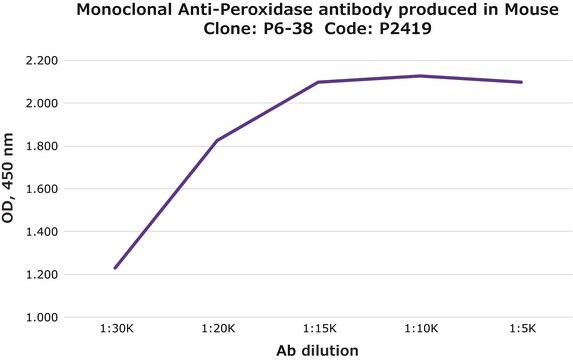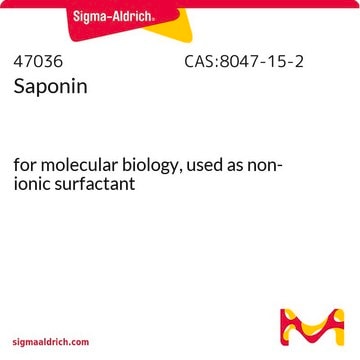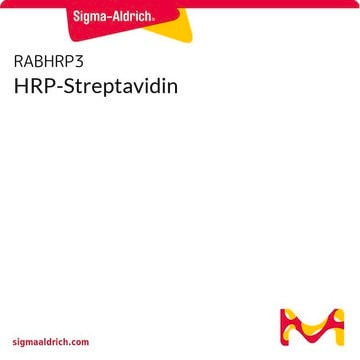Specificity
By immunoelectrophoresis (IEP), a single arc of precipitation is observed when the product (prior to the addition of BSA) is electrophoresed and then allowed to diffuse against anti-rabbit whole serum or anti-rabbit IgG. No reaction is observed against free horseradish peroxidase.
Application
Peroxidase Anti-Peroxidase Soluble Complex antibody produced in rabbit has been used in:
- immunoblotting[1][2]
- to detect the expression of TAP-tagged proteins
- immunoprecipitation
- immunohistochemical staining[3]
Peroxidase Anti-Peroxidase Soluble Complex antibody produced in rabbit was used in immunoblotting of yeast whole cell extracts.
Sigma PAP is assayed by immunoelectrophoresis, Ouchterlony double diffusion, and immunohistochemical staining techniques to ensure purity and functional reactivity. It is recommended that the optimal working dilution be determined in the specific assay system.
Sigma Peroxidase Anti-Peroxidase Soluble Complex antibody produced in rabbit is assayed by immunoelectrophoresis, Ouchterlony double diffusion, and immunohistochemical staining techniques to ensure purity and functional reactivity. It is recommended that the optimal working dilution be determined in the specific assay system.
Biochem/physiol Actions
Peroxidase:anti-peroxidase (PAP) immune complex is inexpensive immunoglobulin ligand. It is widely used for the detection of fragment crystallisable (Fc) receptor binding and fragment antigen binding (Fab) regions.
The Peroxidase Anti-Peroxidase (PAP) soluble complex is prepared by a modification of the method of Sternberger using specific polyclonal or monoclonal antibodies to horseradish peroxidase and highly purified enzyme. Since the enzyme is not covalently coupled to the antibody, the soluble complex retains its enzyme and antibody reactivity with distinct advantages over enzyme-conjugated antibodies.
Physical form
Solution in 0.01 M phosphate buffered saline, pH 7.4, containing 0.05% MIT
Storage and Stability
Store at –20 °C. For continuous use, the product may be stored at 2-8 °C for up to one month. For extended storage, the solution may be frozen in working aliquots at –20 °C. Repeated freezing and thawing or storage in "frost-free" freezers, is notrecommended. If slight turbidity occurs upon prolonged storage, clarify the solution by centrifugation before use.
Disclaimer
Unless otherwise stated in our catalog or other company documentation accompanying the product(s), our products are intended for research use only and are not to be used for any other purpose, which includes but is not limited to, unauthorized commercial uses, in vitro diagnostic uses, ex vivo or in vivo therapeutic uses or any type of consumption or application to humans or animals.









